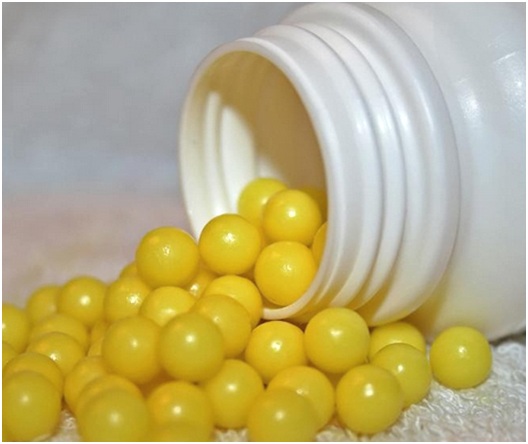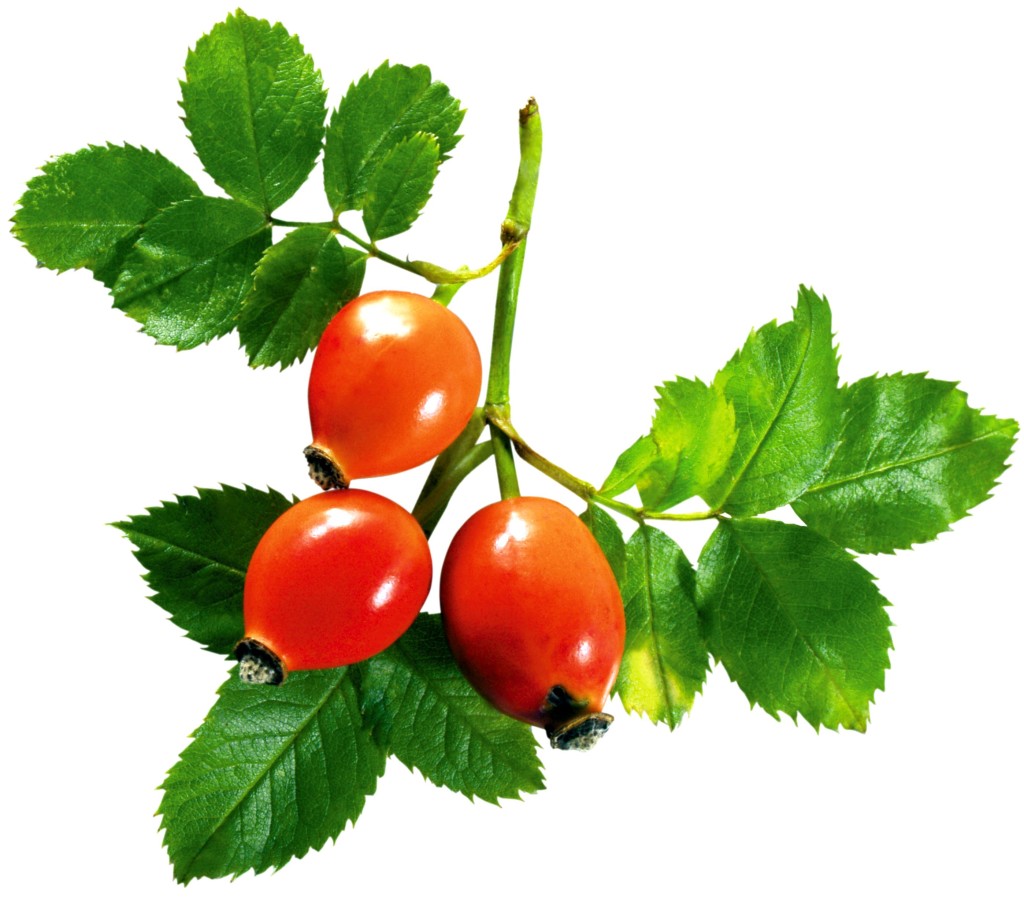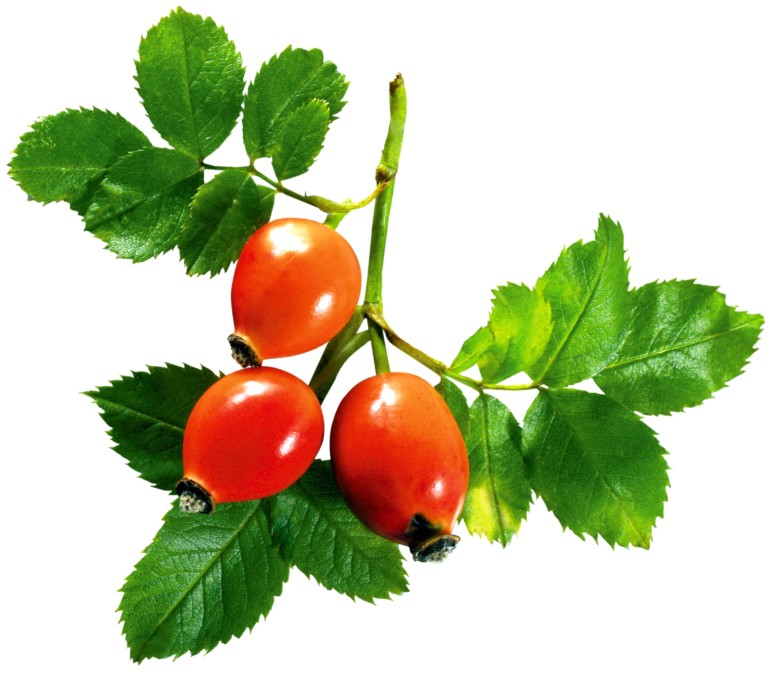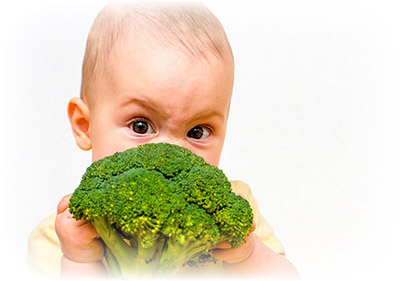Vitamin C for children with early age plays an important role in maintaining the health and development of the body. Babies up to one year old receive all the necessary substances from their mother's milk or as part of artificial milk formulas. Vitamin C is not produced in the body, but at the same time plays a huge role in maintaining health. Therefore, it is necessary to ensure that a sufficient amount comes with food.
What role does vitamin C play for children 1 year of age and older? What are its consumption rates and sources of supply, as well as the consequences of deficiency in the body? Let's try to understand these important issues.
The beneficial properties of the vitamin for the child’s body are undoubted and proven by many years of practice. Winner of two Nobel Prizes Linus Pauling suggested that high doses of this vitamin, 100 times more than recommended, could protect the body from many diseases and prevent the development of cancerous tumors.
He chose himself and his wife as experimental participants in the experiment to test his theory. Indeed, the great scientist lived a long and fruitful life (93 years), but died of cancer. There is still no evidence that large doses are beneficial.
The beneficial properties of the presence of vitamin C in the body have long been proven. You can verify this by listing the processes in which he is a participant:
- The body produces collagen, which is part of the walls of blood vessels. Vascular permeability decreases, tissue regeneration processes improve.
- Serotonin is formed from tryptophan. It is one of the main neurotransmitters, often called the happiness hormone because its production improves mood.
- Catecholamines, physiologically active substances, are produced. They are synthesized in the adrenal glands and brain, and are designed to increase the activity of the endocrine glands.
- Corticosteroids are synthesized - steroid hormones produced by the adrenal cortex. They have an anti-inflammatory effect on the body.
- Cholesterol is converted into bile acids, due to which the content of potentially toxic compounds in the body decreases, cholesterol stones dissolve, and the composition of bile changes qualitatively.
- Detoxification occurs in hepatocytes and liver cells. This is very important, since these cells have limited opportunity recovery. At the same time, they bear a heavy burden when removing medicinal poisons and other toxic substances from the body.
- The superoxide radical is neutralized to hydrogen peroxide. This prevents the development of many serious illnesses– diabetes, atherosclerosis, Alzheimer’s disease, slows down the aging process in the body.
- Vitamin E is restored, the need for B vitamins, folic and pantothenic acid is reduced.
- The synthesis of interferon is stimulated, immunity is increased.
- Improves the absorption of iron, which occurs in small intestine. This prevents the development of anemia and improves blood hemoglobin levels.
Given the wide range of processes in which vitamin C is involved, it is especially important for children during periods of intensive growth to ensure that they receive it in sufficient quantities.
Sources
In humans, unlike cats, for example, vitamin C is not produced. Its entry into the body is possible only from the outside with food or artificial vitamin preparations.
The highest amount of this vitamin is in rose hips - 650 mg in 100 grams of fresh berries, bell pepper, black currant. Slightly less in kiwi, strawberries and citrus fruits. To compensate for the deficiency, parents often offer their children citrus fruits, which cause allergies.
This is unjustified, since the content of vitamin C in cabbage (especially sauerkraut) and green parsley exceeds its amount in citrus fruits. Cabbage, pepper, parsley, rose hips rarely cause allergies, because these products are common in our latitudes and are useful for children.
Vitamin C is included in all multivitamin complexes. Many pharmacological companies also produce the drug in its pure form as effervescent tablets, gummies, dragees and regular chewable tablets.
Daily requirement of a child's body
The child’s body’s need for the vitamin depends on age and ranges from 30 to 90 milligrams per day. During stressful situations, during the period of illness or recovery from illness, the need increases, and the dose is increased. There is an upper permissible level of consumption per day, it is:
- 2000 mg for adults;
- 1800 mg for adolescents;
- 1200 mg for children from 9 to 13 years old;
- 600 mg for children from 4 to 8 years;
- 400 mg for children from 1 to 3 years.
If the family lives in unfavorable environmental conditions, increased consumption of vitamin C is justified. The recommended increase in intake is 35 milligrams per day.
Consumption rates per day:
- 90 mg for adults;
- 75 mg for adolescents;
- 45 mg for children from 9 to 13 years old;
- 25 mg for children from 4 to 8 years;
- 15 mg for children from 1 to 3 years.
Diseases interfere with the good absorption of vitamin C gastrointestinal tract. With large consumption of fresh fruits and vegetables, absorption is also reduced.
Admission rules
During growth, it is very important for the baby to receive all the necessary substances into the body. Nutritious food affects work internal organs and systems, improves the condition nervous system.
The peculiarity of the vitamin contained in vegetables and fruits, which are available to children all summer, is that it is quickly destroyed by heat. culinary processing. During long storage products, the vitamin value also decreases. The only exceptions are cabbage heads; they are stored without loss. nutritional value all winter until spring. Therefore, it is important to give children fresh vegetables and fruits in sufficient quantities.

Vitamin C is water-soluble, so it does not accumulate in the body. Its excess is excreted by the kidneys along with urine; daily intake in sufficient quantities is necessary. Normal level it can be maintained in the body with the help of pharmacy vitamins. This is especially true in winter time, when the amount of fresh vegetables and fruits is minimal.
How does deficiency manifest itself?
Acute vitamin C deficiency leads to various pathologies. The most terrible and deadly of them is scurvy. Now it is very rare. Develops with complete absence intake of vitamin C in the body from one to three months. If there is insufficient intake of it into the body, the disease may develop after six months and have less pronounced clinical signs.
Collagen, in the production of which vitamin C takes an active part, is an important component of vascular walls. Therefore, the first manifestation of scurvy is numerous subcutaneous hemorrhages caused by fragility of blood vessels. The gums begin to bleed, become loose, and then the teeth fall out. Bone formation slows down. Hypochromic anemia occurs and immunity decreases.
The first sign of hypovitaminosis is that the child gets tired quickly. Pallor and dryness of the skin, poor healing of wounds and bruises, hair loss and brittle nails also appear.
How to use
Knowing daily requirement and its approximate content in various food products is easy to calculate, the occurrence of a deficiency in the supply of necessary substances to the body. Pharmacy drugs will be able to fill the temporary shortage. They come in a variety of forms:
- solution for intramuscular and intravenous injections 50 or 100 mg/ml;
- dragee 50 mg;

- tablets from 25 mg to 2.5 g;
- chewable tablets “Asvitol” 200 mg and “Vitamin C” 500 mg;
- effervescent tablets in different dosages from 250 to 1000 mg.
It should be borne in mind that the need increases during illnesses and severe physical activity. When using ascorbic acid tablets, the daily norm for a child can be considered a dosage of 25 mg to 50 mg, depending on age.
As a preventive measure, during colds in the winter-spring period, if there is insufficient intake of fresh vegetables and fruits in the diet, the dosage is increased to 100–200 mg. In complex vitamin preparations contains a dose of vitamin C that corresponds to the norm daily consumption for a certain age indicated on the packaging and in the instructions.

Every child should receive vitamins in quantities that ensure normal functioning of the body. For children, one of the main ones is vitamin C.
The commonly known name for vitamin C is ascorbic acid. This is the drug that children buy for their babies at the pharmacy. Ascorbic acid belongs to water-soluble vitamins, it cannot be obtained from the body. The main source of vitamin C is food.
Positive properties
 Let's look at the main positive properties of ascorbic acid that are important for young children.
Let's look at the main positive properties of ascorbic acid that are important for young children.
One of the first such properties is the effect on immunity - children with sufficient levels of vitamin C in the body get sick much less often than those kids who lack this vitamin.
- A daily dose of vitamin C helps resist colds and speeds up recovery from viral diseases;
- Vitamin C is of great importance for the healing of wounds and burns - with the help of vitamin C, small patients recover faster after surgical interventions;
- Ascorbic acid reduces the formation of blood clots and has a positive effect on digestive system, being a natural laxative;
- Vitamin C for children is a powerful protective agent against the effects of toxic substances that accumulate in the body;
- Ascorbic acid is involved in the formation of collagen fibers; without it, the synthesis of iron and folic acid does not occur;
- Recent research by scientists has shown that the component prevents the development of sudden infant death syndrome;
- Due to its participation in the synthesis of adrenaline, vitamin C is called an anti-stress vitamin that improves mood in children;
- Thanks to ascorbic acid, blood clotting is regulated, the condition of blood vessels improves, and the level of capillary permeability is normalized;
- Ascorbic acid is also involved in the processes of hematopoiesis, which is especially important after injuries, blood loss, and surgical interventions;
- Ascorbic acid is used for the prevention of cancer for its antioxidant properties.
Sources of vitamin
 As already mentioned, ascorbic acid can only be obtained from food, so let’s pay attention to those products that contain the most of it. The leader among such products will be rose hips - it contains one and a half thousand milligrams per 100 grams of product. Significantly less is found in black and red currants, garden strawberries, and gooseberries. It is commonly believed that the main source is citrus fruits, but this is a misconception. Lemons, tangerines, and pineapples contain only 40 milligrams of ascorbic acid per 100 grams of product, which is five times less than in black currant. It is citrus fruits that parents offer to young children so that the body’s requirement for ascorbic acid is satisfied. This can cause an allergic reaction to unfamiliar foods, so doctors recommend giving children closer substitutes that contain no less vitamin C. For example, cauliflower contains 70 milligrams, kohlrabi cabbage contains 50 milligrams, and white cabbage contains the same amount. These products are perfect for feeding children and will not cause allergies, as they are more common in our latitudes.
As already mentioned, ascorbic acid can only be obtained from food, so let’s pay attention to those products that contain the most of it. The leader among such products will be rose hips - it contains one and a half thousand milligrams per 100 grams of product. Significantly less is found in black and red currants, garden strawberries, and gooseberries. It is commonly believed that the main source is citrus fruits, but this is a misconception. Lemons, tangerines, and pineapples contain only 40 milligrams of ascorbic acid per 100 grams of product, which is five times less than in black currant. It is citrus fruits that parents offer to young children so that the body’s requirement for ascorbic acid is satisfied. This can cause an allergic reaction to unfamiliar foods, so doctors recommend giving children closer substitutes that contain no less vitamin C. For example, cauliflower contains 70 milligrams, kohlrabi cabbage contains 50 milligrams, and white cabbage contains the same amount. These products are perfect for feeding children and will not cause allergies, as they are more common in our latitudes.
Vitamin C requirement in children
 Young children have an extremely acute need for ascorbic acid. Ascorbic acid is supplied with mother's milk in small quantities - only 5-7 milligrams in one hundred grams of milk, so it is necessary to focus on daily doses of ascorbic acid for children. In this case, the mother can increase foods containing vitamin C in her diet.
Young children have an extremely acute need for ascorbic acid. Ascorbic acid is supplied with mother's milk in small quantities - only 5-7 milligrams in one hundred grams of milk, so it is necessary to focus on daily doses of ascorbic acid for children. In this case, the mother can increase foods containing vitamin C in her diet.
IN at different ages the daily dose is not the same. For example, for children up to three months the norm is 30 milligrams of vitamin per day, the norm for children from 4 to 6 months is 35 milligrams, from 7 months to one year – 40 milligrams. For children from one to three years old, the daily dose is 45 milligrams.
Application Feature
 Ascorbic acid is very important for children during their growth period. It not only has a positive effect on the functioning of internal organs, but also on the state of the nervous system. It is worth noting that ascorbic acid is very unstable in relation to external factors. For example, if you store food for a long time, most of the ascorbic acid in it will simply be destroyed. You can’t give away products high temperatures. Young children should only receive fresh vegetables and fruits.
Ascorbic acid is very important for children during their growth period. It not only has a positive effect on the functioning of internal organs, but also on the state of the nervous system. It is worth noting that ascorbic acid is very unstable in relation to external factors. For example, if you store food for a long time, most of the ascorbic acid in it will simply be destroyed. You can’t give away products high temperatures. Young children should only receive fresh vegetables and fruits.
Since vitamin C improves the absorption of iron, it is not recommended for children with high hemoglobin.
It is important for parents to remember that ascorbic acid does not accumulate in the body - it is consumed by it as soon as it comes from the outside, so it does not form a kind of vitamin depot. In order to constantly provide the body with this component, you need to take ascorbic acid regularly in small doses. The norm of ascorbic acid can be maintained both by natural foods and by additional vitamin complexes. Most often, pharmaceutical vitamins are used in winter, when it is difficult to obtain fresh food for a child. In this case, the intake rate is indicated on the packaging.
Ascorbic acid deficiency
If there is not enough vitamin C in the baby’s body, this can be noticed by the following signs:
- the baby gets tired quickly, does not want to play outdoor games, falls asleep early and sleeps longer than usual;
- his gums bleed; due to fragility of blood vessels, nosebleeds are possible;
- the baby is susceptible to viral or infectious diseases;
- There is a bluish tint to the skin around the nose and ears.
A lack of vitamin C can have serious consequences for a child’s body. The most terrible disease when ascorbic acid is not supplied to the body for a long time is scurvy. This disease is characterized by the appearance of pinpoint small subcutaneous hemorrhages throughout the body. The skin becomes pale, his face swells a little, the baby strives to assume the fetal position, and any touch to his body causes pain. In order to prevent such conditions, it is necessary to take ascorbic acid correctly.
How to use
 In order to compensate for the deficiency of vitamin C in the child’s body, you need to take care of either food products containing ascorbic acid or special vitamin complexes. Ascorbic acid is prescribed to children in tablets or injections - this measure is necessary if the child is malnourished for some reason. For example, being on a strict diet, suffering from diseases of the gastrointestinal tract, in the postoperative period. Such children need an additional dose of ascorbic acid, since the daily dose is too small in this case. If the baby is sick, the daily dose should reach 100 milligrams per day, but if he is healthy, then the norm is 50 milligrams of ascorbic acid per day. If necessary, the course can be repeated.
In order to compensate for the deficiency of vitamin C in the child’s body, you need to take care of either food products containing ascorbic acid or special vitamin complexes. Ascorbic acid is prescribed to children in tablets or injections - this measure is necessary if the child is malnourished for some reason. For example, being on a strict diet, suffering from diseases of the gastrointestinal tract, in the postoperative period. Such children need an additional dose of ascorbic acid, since the daily dose is too small in this case. If the baby is sick, the daily dose should reach 100 milligrams per day, but if he is healthy, then the norm is 50 milligrams of ascorbic acid per day. If necessary, the course can be repeated.
Overdose of ascorbic acid
In order for the baby’s body to use all the positive properties of ascorbic acid, the intake rate must be observed. An overdose of ascorbic acid is possible, which is manifested by the following symptoms:
- The child begins to have hot flashes, sweats, complains of weakness, headache;
- From the digestive system, flatulence and stool upset (diarrhea) are possible;
- With a significant overdose, stomach pain, vomiting, and insomnia are possible;
- In almost all children, an overdose manifests itself in allergic reaction– redness of the skin, rash and itching.
Consequences of overdose ascorbic acid are dangerous to the health of children, therefore it is necessary to take the vitamin strictly in accordance with the doctor’s prescription - the daily dose should not exceed what is written in the prescription or indicated in the instructions for the drug.

